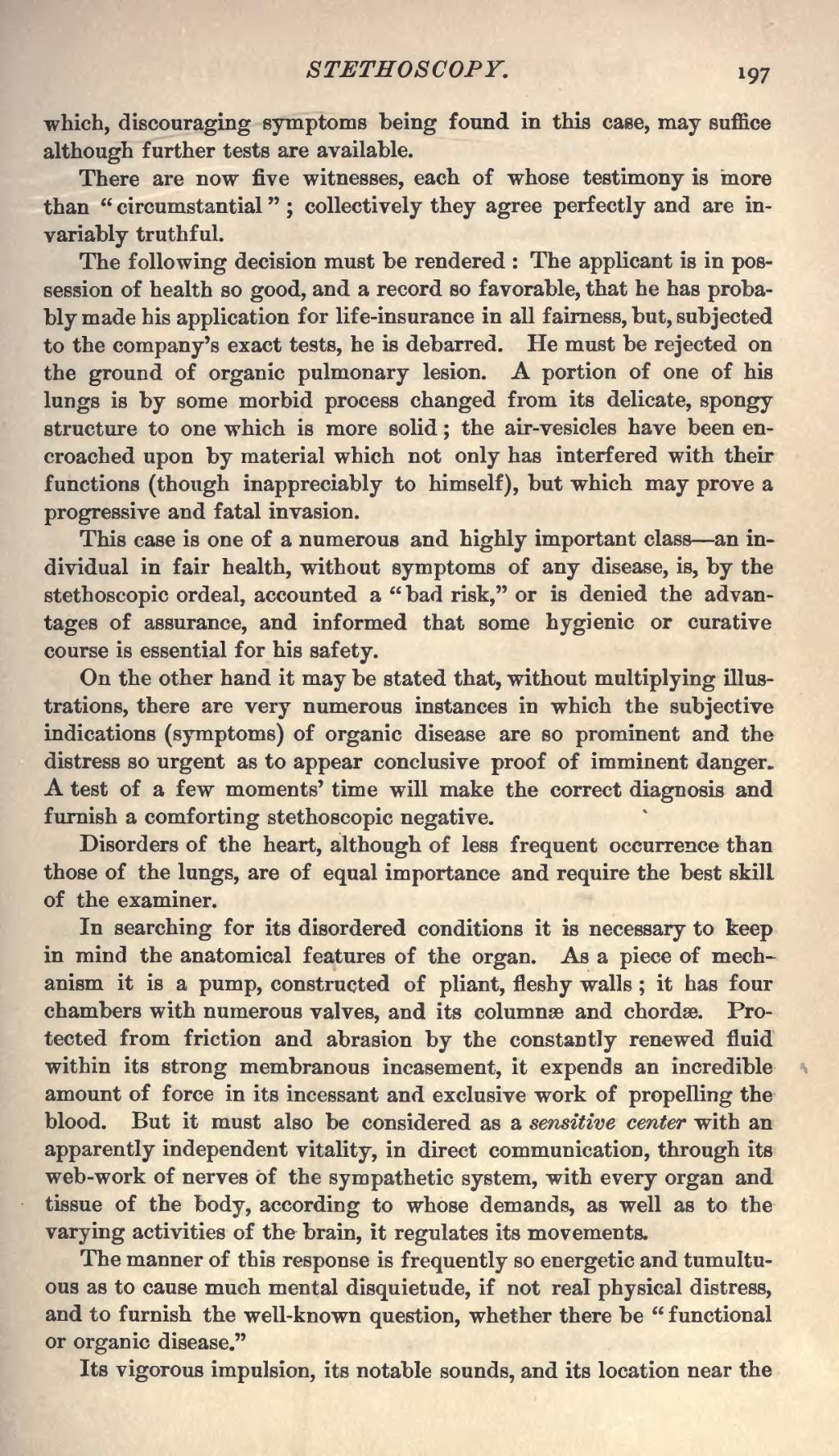which, discouraging symptoms being found in this case, may suffice although further tests are available.
There are now five witnesses, each of whose testimony is more than "circumstantial"; collectively they agree perfectly and are invariably truthful.
The following decision must be rendered: The applicant is in possession of health so good, and a record so favorable, that he has probably made his application for life-insurance in all fairness, but, subjected to the company's exact tests, he is debarred. He must be rejected on the ground of organic pulmonary lesion. A portion of one of his lungs is by some morbid process changed from its delicate, spongy structure to one which is more solid; the air-vesicles have been encroached upon by material which not only has interfered with their functions (though inappreciably to himself), but which may prove a progressive and fatal invasion.
This case is one of a numerous and highly important class—an individual in fair health, without symptoms of any disease, is, by the stethoscopic ordeal, accounted a "bad risk," or is denied the advantages of assurance, and informed that some hygienic or curative course is essential for his safety.
On the other hand it may be stated that, without multiplying illustrations, there are very numerous instances in which the subjective indications (symptoms) of organic disease are so prominent and the distress so urgent as to appear conclusive proof of imminent danger. A test of a few moments' time will make the correct diagnosis and furnish a comforting stethoscopic negative.
Disorders of the heart, although of less frequent occurrence than those of the lungs, are of equal importance and require the best skill of the examiner.
In searching for its disordered conditions it is necessary to keep in mind the anatomical features of the organ. As a piece of mechanism it is a pump, constructed of pliant, fleshy walls; it has four chambers with numerous valves, and its columnæ and chordæ. Protected from friction and abrasion by the constantly renewed fluid within its strong membranous incasement, it expends an incredible amount of force in its incessant and exclusive work of propelling the blood. But it must also be considered as a sensitive center with an apparently independent vitality, in direct communication, through its web-work of nerves of the sympathetic system, with every organ and tissue of the body, according to whose demands, as well as to the varying activities of the brain, it regulates its movements.
The manner of this response is frequently so energetic and tumultuous as to cause much mental disquietude, if not real physical distress, and to furnish the well-known question, whether there be "functional or organic disease."
Its vigorous impulsion, its notable sounds, and its location near the
